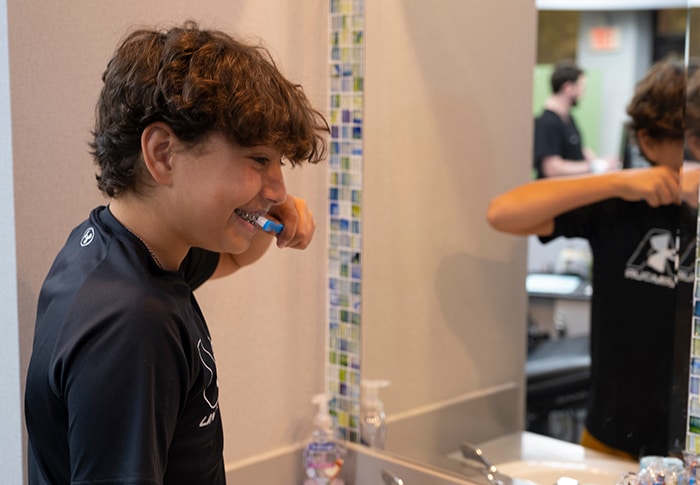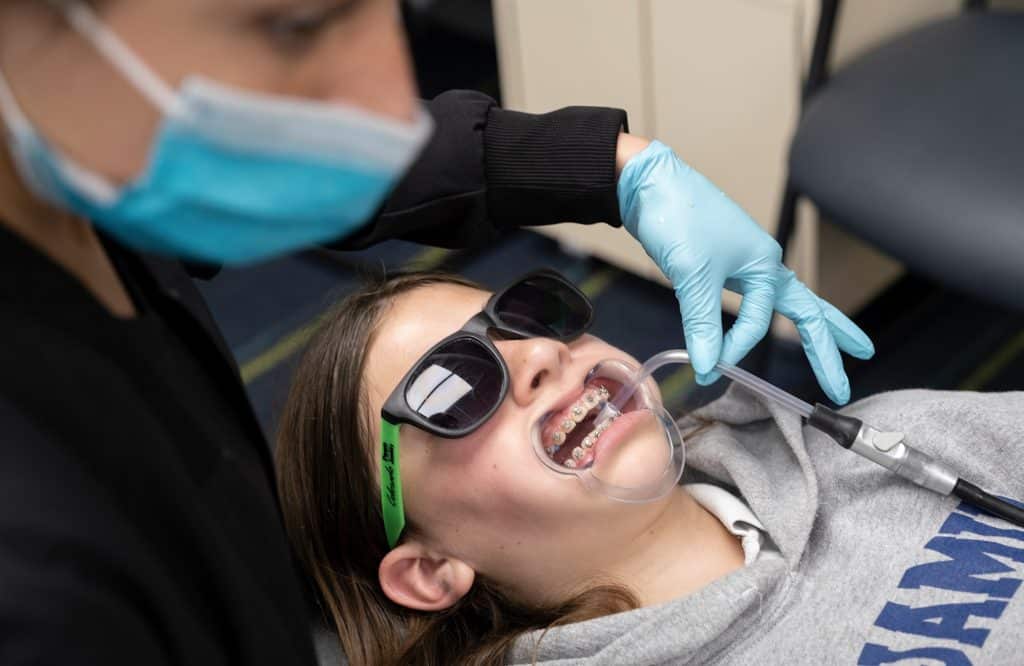Why Age 7? The Optimal Time for Your Child’s First Orthodontic Visit

As parents, we cherish the milestones in our children’s lives, from their first steps to their first day of school. An equally important, yet often overlooked milestone is their first orthodontic evaluation, ideally at the age of 7. This age is not arbitrarily chosen; it’s a pivotal time for detecting and addressing dental issues that can affect a child’s oral health for years to come. Let’s explore why this age is so crucial in the field of orthodontics.
Mixed Dentition: A Critical Observation Window
At around 7 years old, children enter a phase known as mixed dentition, where they have both primary (baby) and permanent teeth. This transitional phase offers a unique opportunity for Orthodontics by Bradford to identify and predict dental issues.
During this stage, the coexistence of baby and emerging adult teeth provides valuable insights. Orthodontics by Bradford can spot problematic patterns early on and devise strategic interventions. This early detection is vital for guiding the child’s dental development in a positive direction.
Educating children about dental health during this phase is also crucial. It’s an opportune time to instill good oral hygiene habits, setting the stage for a lifetime of dental health.
Early Intervention: Proactive Dental Care.
By age 7, while a child’s jaw is still developing, Dr. Bradford can identify and potentially intercept severe dental issues. Early interventions can address slight misalignments or spacing issues before they become more complex. This proactive approach not only simplifies future treatments but can also be more cost-effective for families in the long run, preventing the need for more extensive orthodontic work as the child grows older.
Identifying Developmental Issues: Laying the Foundation for a Healthy Smile
This age is prime for identifying issues in jaw development and teeth alignment. Crowding, overbites, underbites, and crossbites can start to become apparent. Addressing these problems early allows for more effective treatments and can prevent minor issues from developing into more significant concerns.
Early identification also aids in creating a tailored treatment plan that evolves with the child’s growth, ensuring optimal outcomes as they transition into their teenage years.
Guiding Jaw Growth: Shaping Future Smiles
Addressing jaw growth issues at this young age is crucial. Dr. Bradford can employ techniques to guide jaw development, promoting healthy alignment and bite. This proactive approach can prevent more serious complications in the future, including the need for invasive treatments like jaw surgery.

A Positive Orthodontic Experience: Building Trust and Confidence
Introducing children to orthodontic care early helps build a foundation of trust and familiarity. This positive experience can make future treatments less intimidating and helps children view dental visits as a normal part of their healthcare routine. A positive relationship with their orthodontist encourages regular check-ups and dental care into adulthood.
Conclusion: Embarking on a Journey to Lifelong Dental Health.
Beginning the orthodontic journey at age 7 sets the groundwork for a future of healthy, beautiful smiles. This proactive approach in early dental care is not just about aesthetics; it’s about establishing a lifetime of oral well-being and confidence. As parents, scheduling that first orthodontic appointment can be one of the most significant steps you take in ensuring your child’s dental health. Remember, a journey of a thousand smiles begins with this crucial first step. Your child’s future self will undoubtedly be grateful for this early attention to their dental health.
